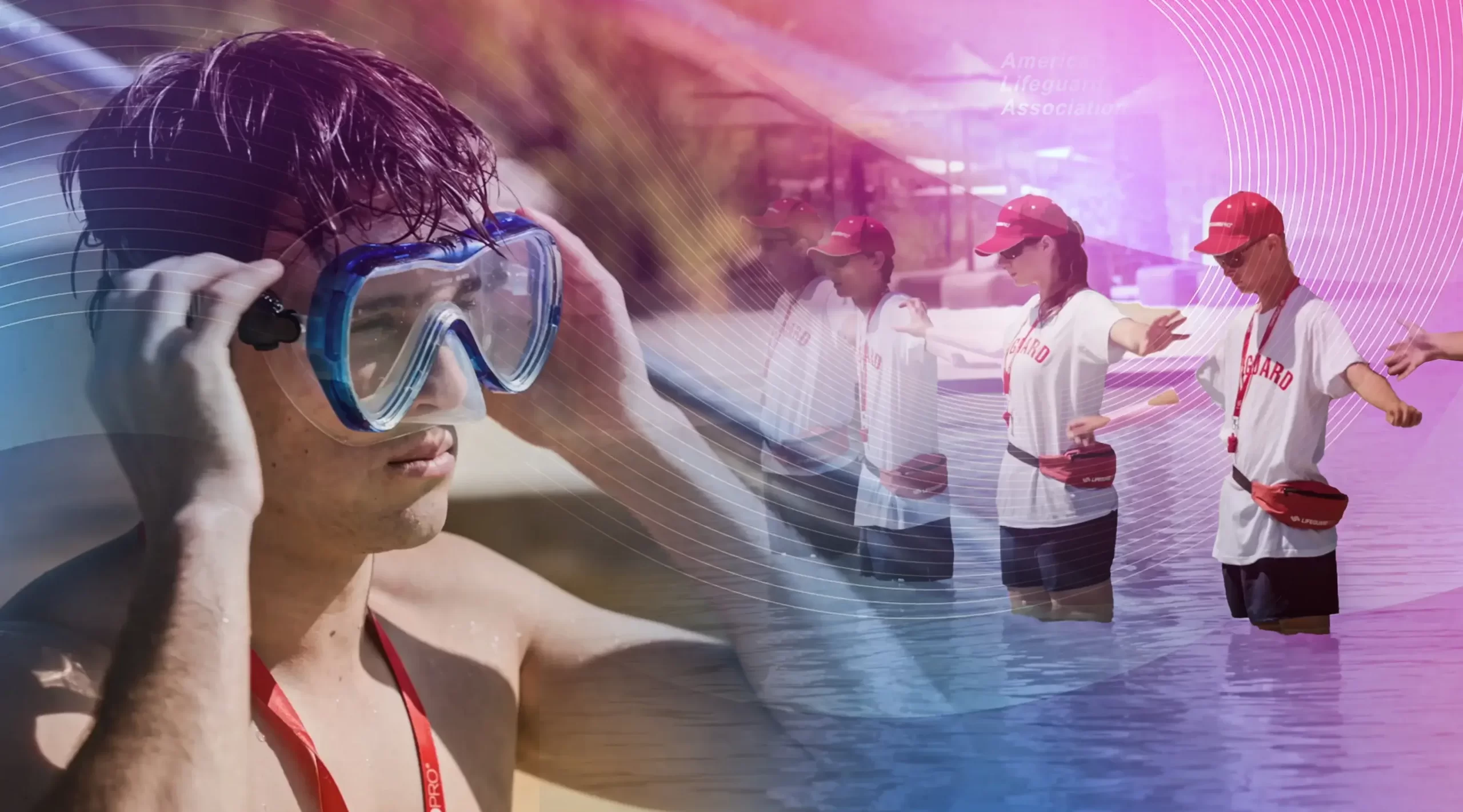American Lifeguard Water Safety Training
The Essential Component
of Lifeguard and CPR Training
How does the process work?
Our Class Programs
Water Safety Training: The Essential Component of Lifeguard and CPR Training
Water safety is a critical aspect of aquatic environments, ensuring that both swimmers and lifeguards are prepared to handle emergencies. As part of its comprehensive lifeguard programs, the American Lifeguard Association (ALA) integrates safety training with CPR training and other essential lifesaving skills. The ALA’s courses teach both lifeguards and recreational swimmers about water hazards, safety protocols, and emergency response procedures. By combining these key elements, the ALA ensures its trainees are fully prepared to prevent and manage incidents in any aquatic setting.
The Importance of Water Safety Training
Understanding how to stay safe in and around water is essential for both lifeguards and the general public. According to the World Health Organization, drowning remains one of the leading causes of unintentional injury deaths worldwide, emphasizing the need for proper training.
Lifeguards act as the first line of defense against aquatic accidents. Their preparedness is critical, as they must be able to recognize potential hazards, respond efficiently to emergencies, and implement preventive measures. Beyond just rescuing those in immediate danger, lifeguards are trained to assess risks, enforce safety rules, and maintain a controlled swimming environment.
In many emergency situations, immediate medical attention is necessary. That’s why lifeguard training programs combine training with CPR and First Aid certification to ensure that responders are equipped to handle near-drownings, slips and falls, and other aquatic incidents.
Key Components of Water Safety Training
The ALA’s training programs focus on several essential components to provide a comprehensive approach to preventing and responding to emergencies:
- Risk Assessment & Prevention: Lifeguards learn to identify potential dangers, from rip currents and hazardous weather conditions to slippery pool surfaces and overcrowding. Recognizing risks early helps prevent emergencies.
- Safety Protocols & Procedures: Proper enforcement of swimming rules, routine surveillance, and maintaining access to rescue tubes, backboards, and AEDs are key responsibilities.
- Rescue Techniques: Lifeguards are trained in multiple rescue strategies, including reaching assists, throwing assists, and in-water direct rescues for both active and unconscious victims.
- Emergency Response & CPR Integration: Training includes CPR for adults, children, and infants, as well as proper AED use for cardiac emergencies.
Effective Communication: Lifeguards must interact with swimmers to enforce safety rules and reduce risky behavior, ensuring a safe environment for all visitors. - Effective Communication: Lifeguards must interact with swimmers to enforce safety rules and reduce risky behavior, ensuring a safe environment for all visitors.
ALA’s Commitment to Advancing Water Safety
The American Lifeguard Association is dedicated to enhancing lifeguard preparedness by supporting the latest innovations in lifesaving equipment.
Our national spokesperson, Wyatt Werneth, has been featured in numerous news articles, discussing advancements in rescue technology, such as the new rescue tube design and a recently USCG-approved ring buoy. These innovations improve the efficiency and accuracy of water rescues.
Beyond equipment, ALA supports the integration of AI, drones, and surveillance technology in lifeguard operations, ensuring faster response times and improved situational awareness.
Why Lifeguard Training is Essential
Lifeguard education is more than just learning rescue skills—it’s about creating a safe, controlled environment that prevents emergencies before they happen. Whether working at a pool, water park, resort, or beach, lifeguards must be prepared for any situation.
By enrolling in an ALA training program, participants receive comprehensive instruction that equips them with the knowledge and skills needed to protect lives. The ALA continues to lead the way in lifeguard certification, emergency preparedness, and public safety advocacy.
For more information on training opportunities, visit the ALA website and explore both in-person and online courses designed to accommodate different learning preferences.
Conclusion
Lifeguard training is a vital part of public safety, providing the skills and knowledge necessary to protect swimmers and respond to emergencies. By combining water safety training with CPR and First Aid certification, the American Lifeguard Association ensures lifeguards are fully prepared for real-world rescue scenarios.
Whether working at a pool, water park, or open water setting, lifeguards play a crucial role in preventing accidents and saving lives. The ALA remains committed to equipping lifeguards with the best training and latest innovations in the field.
Frequently Asked Questions (FAQs) About Water Safety Training
- What is covered in lifeguard training?
- Trainees learn about risk assessment, emergency response, CPR, and rescue techniques.
- Why is lifeguard training important?
- It ensures lifeguards can prevent and respond to aquatic emergencies.
- Is CPR included in lifeguard certification?
- Yes, CPR and First Aid training are key components.
- How long does certification last?
Most certifications are valid for two years, after which recertification is required. - Can lifeguard training be completed online?
Yes, the ALA offers online courses for flexible learning. - What is the role of CPR in lifeguard training?
CPR is crucial for responding to near-drownings and cardiac emergencies. - Do all lifeguards need certification?
Yes, lifeguard certification is essential for ensuring safety and compliance.
Lifeguard Onsite Training FAQs
Yes, the ALA offers onsite training programs that allow participants to complete their entire training, including CPR and First Aid, in person.
The duration of the onsite training program varies depending on the facility and the number of participants, but most courses take approximately 26.5 hours.
No, while many participants choose to complete the online portion first, you can opt to complete the entire course onsite if that works better for your schedule.
The onsite program covers CPR, AED usage, First Aid, water rescue techniques, injury prevention, and practical rescue skills, all taught in real-world settings.
Yes, participants will practice hands-on rescue techniques and emergency response scenarios under the supervision of certified instructors.
Lifeguard certifications earned through the ALA are valid for two years, after which participants must complete a recertification course to renew their qualifications.
No, the ALA provides all necessary training equipment, including mannequins for CPR practice and AED devices for training purposes.
Yes, the ALA offers onsite training at pools, water parks, and other aquatic facilities, allowing lifeguards to train in the environment where they will be working.
You can contact the ALA directly to arrange onsite training for your lifeguard team. The ALA will work with you to schedule a training session that meets your needs.
Yes, the minimum number of participants for onsite training varies by location. Please contact the ALA for specific details and to arrange group training.



